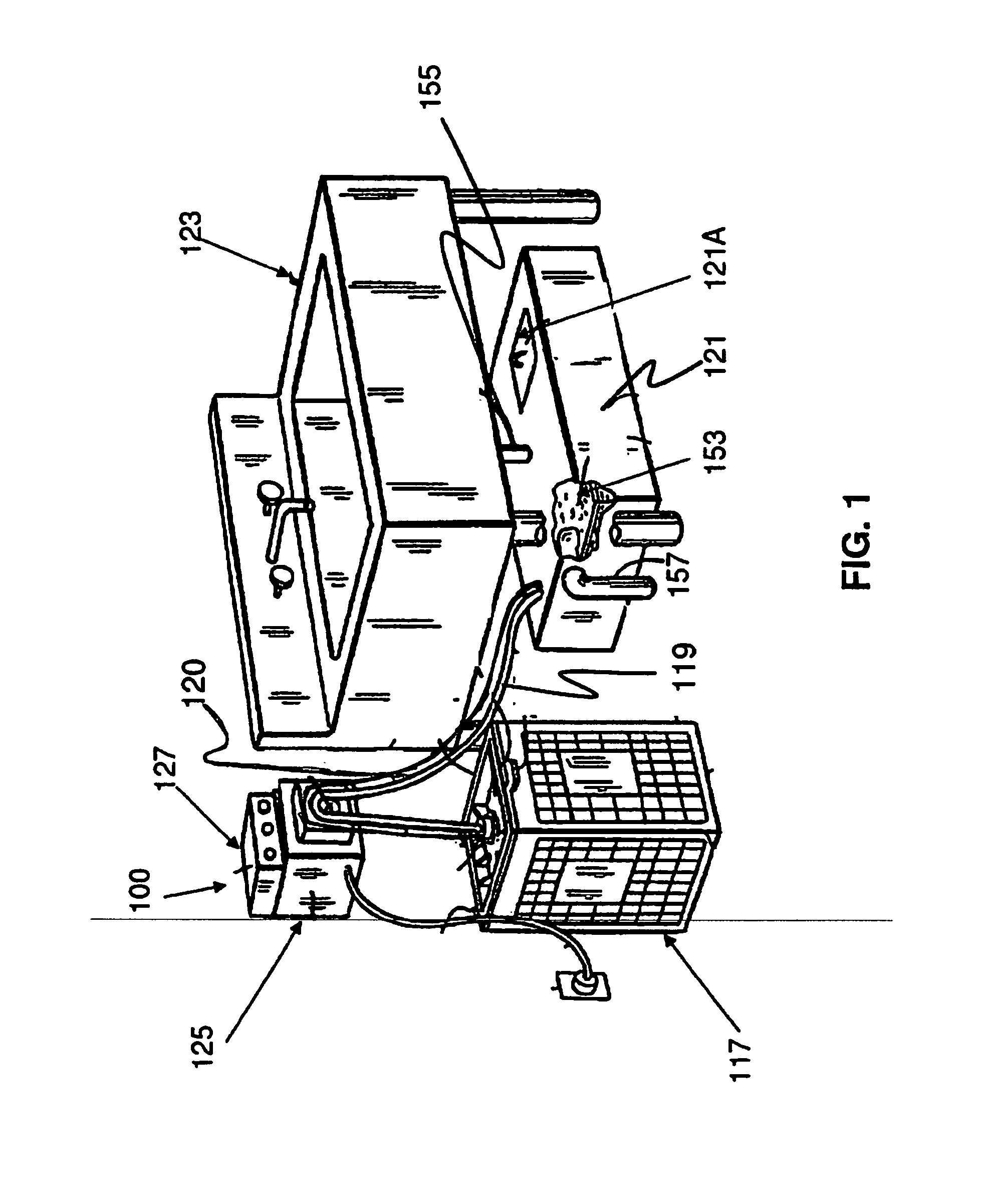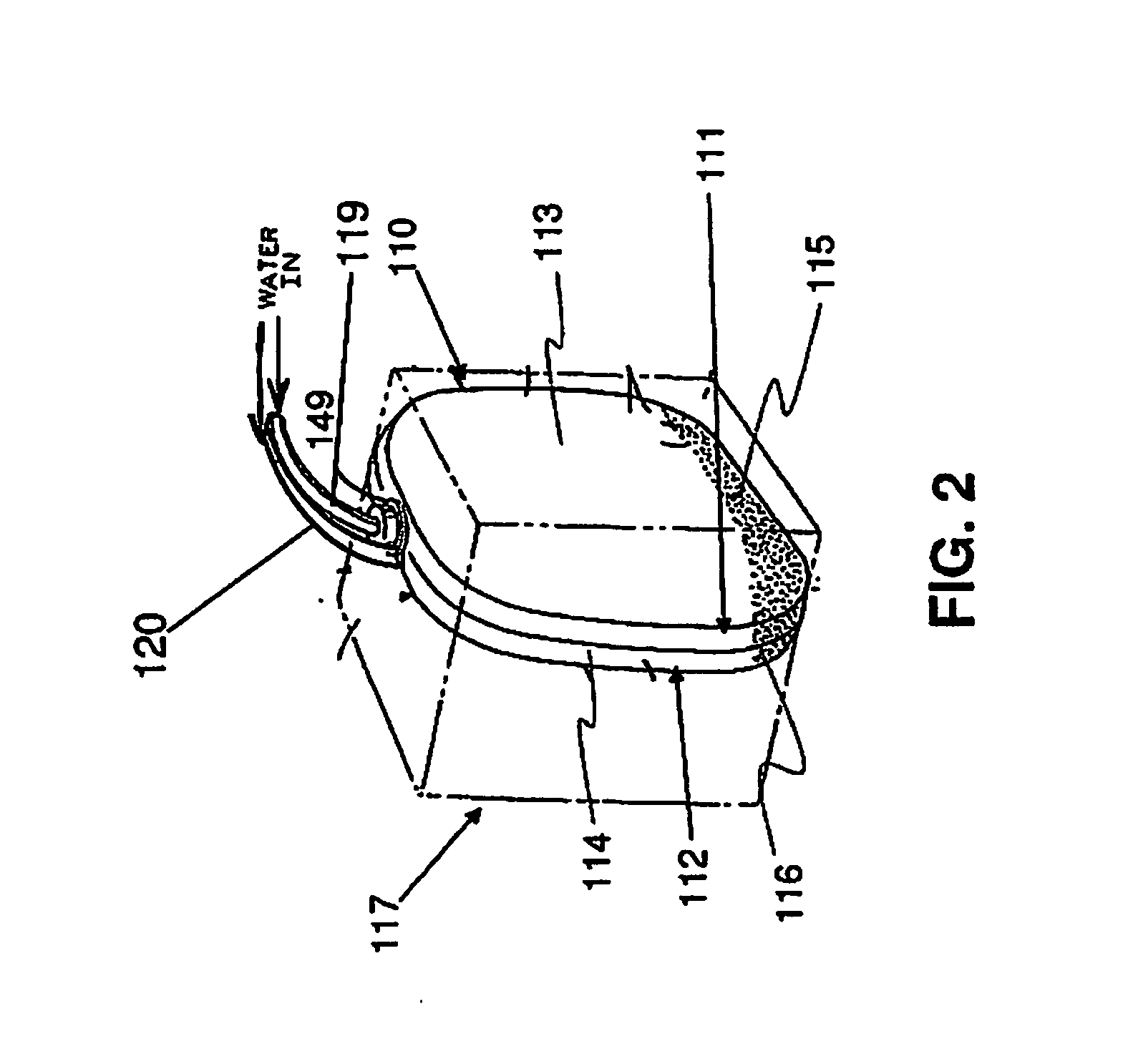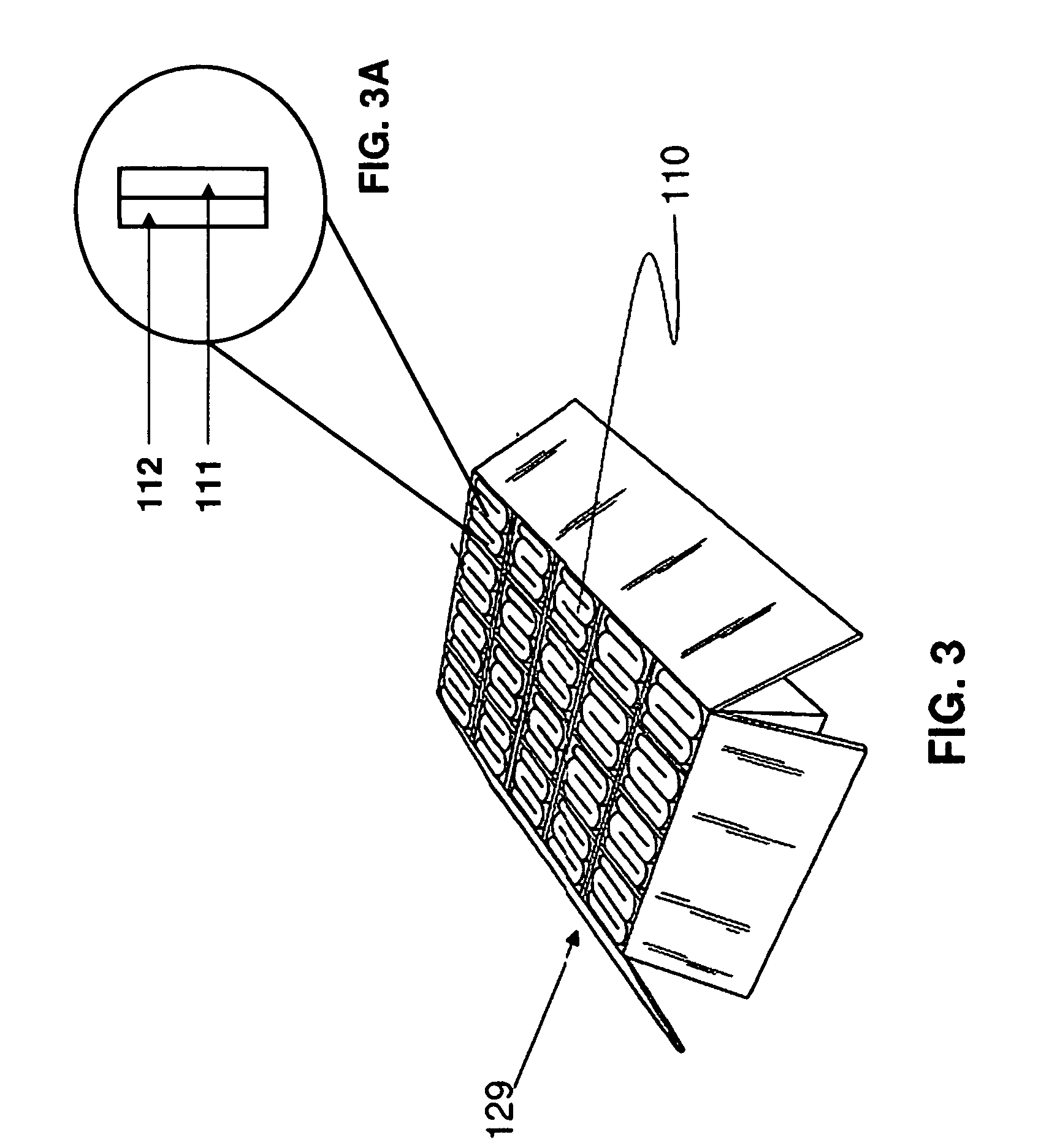Method of treating drains using fungus cultures
a technology of drains and cultures, applied in the field of drain treatment, can solve the problems of unfavorable environmental protection, high cost of insecticides, and unsightly cockroaches, and achieve the effects of long-term effects on the inhabitants of the places in which they are used, as well as the environment, and are not known
- Summary
- Abstract
- Description
- Claims
- Application Information
AI Technical Summary
Benefits of technology
Problems solved by technology
Method used
Image
Examples
examples
[0049]U.S. Pat. No. 5,935,843 to Glendening et al., the subject matter of which is incorporated herein in its entirety, discloses a method and apparatus for waste degradation. The method deposits microorganisms that degrade waste into waste traps typically found in restaurant settings.
[0050]With reference to FIG. 1-3A of the present disclosure, a waste degradation system 100 is shown. The system 100 includes a bag 110 as a container for holding an aqueous solution 113 of microorganisms 115 supported in a crate 117 for the bag 110. Solution feed hoses 119 and 120 connect between the bag 110 and a waste trap 121 for a sink 123. A pump 125 having a timer 127 regulates the periodic flow of the microorganism solution 113 from the bag 110, through the hoses 119 and 120 and into the waste trap 121. The bag should be constructed of a material that allows for adequate oxygen exposure to maintain the viability of the spores of the fungus cultures. Generally, the fungus solution is dedicated t...
PUM
 Login to View More
Login to View More Abstract
Description
Claims
Application Information
 Login to View More
Login to View More - R&D
- Intellectual Property
- Life Sciences
- Materials
- Tech Scout
- Unparalleled Data Quality
- Higher Quality Content
- 60% Fewer Hallucinations
Browse by: Latest US Patents, China's latest patents, Technical Efficacy Thesaurus, Application Domain, Technology Topic, Popular Technical Reports.
© 2025 PatSnap. All rights reserved.Legal|Privacy policy|Modern Slavery Act Transparency Statement|Sitemap|About US| Contact US: help@patsnap.com



